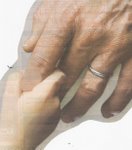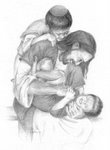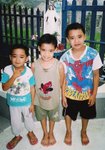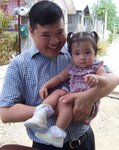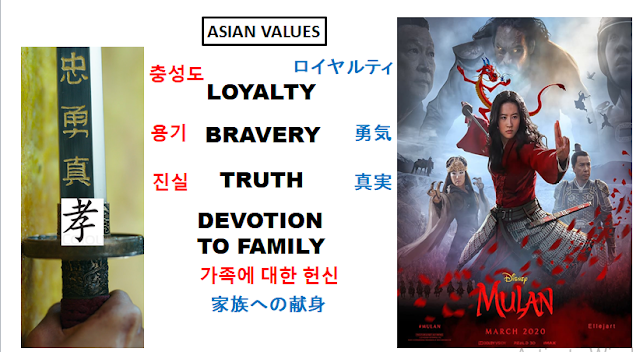https://www.psychologytoday.com/us/blog/facing-trauma-together/202107/what-drives-asian-american-suicides
What Drives Asian American Suicides: Ethnic causes, bicultural conflicts, and
racism.
Posted July 9,
2021 | Reviewed
by Devon Frye
KEY POINTS
- Suicide is the leading cause of
death among Asian American young adults age 15-24, according to the CDC.
- Pressure in Asian culture to
preserve the honor of one's family or ethnic group can drive some to
commit suicide out of shame.
- The trauma of racism in
American society can predispose Asian Americans to self-directed violence.
According to data from the Centers for Disease
Control and Prevention, suicide is the 10th
leading cause of death in the United States. When broken down by race, suicide
is the first leading cause of death among Asian American young adults age
15-24. This is true of no other racial group in this age range in America.1
A young Asian American man of 21 died by
suicide around two months ago. This happened to a family who are longtime
church members. I didn’t know his parents well, and him, not at all. He grew up
in this church, whose primary members are Asian American. However, what I don’t
know is if they lived in a primarily Asian American community.
Due to my psychotherapy work
with mainly trauma survivors, which included dealing with suicide, one of the
pastors invited me to present this topic to their staff and lay leaders. The
purpose was to help them understand how this could happen to an upstanding young
man, on the cusp of adulthood, with a bright future ahead of him.
Personally, due to experiencing multiple
traumas since conception, continuing after I was born, I remember the times
when I didn’t know if I wanted to go on living. This post speaks specifically
to how the Asian cultural background, the bicultural conflicts, and the
xenophobic attitudes that constantly surround those of this ethnic background
living in the U.S. lead to death by suicide.
Death by Suicide: How Asian Culture Contributes
Asians
come from traditional collectivist societies that value interdependence over
independence. Consequently, the need to preserve and perpetuate collective
honor (family, ethnicity,
society, etc.) is held in the highest esteem. Failing to do so leads to what
I've coined as "Asian shame,"
where one feels they have so disgraced their kin they must hide oneself
(physically and/or emotionally) or rid oneself from society and atone for their
actions by suicide.2
As a Chinese-American, arriving on these
shores in 1947 at the tender age of three, growing up bi-culturally, this is my
story as well. However, I was one of the lucky ones, even with long-term
multiple traumas throughout my childhood. I
am alive to tell my story, in the hopes that others from my native culture know
they are not alone. I also want the population at large to understand how we
live in a state of trauma all our lives.
I was raised with learning how to let others
“save face,” a well-known Chinese saying, meaning that the biggest sin was if I
were to shame our family, our elders, basically everyone else. As a
child, I learned to carry the shame inside me, stuffing my rage when bullied in
school, afraid to tell my parents because I would be blamed; and beaten at
home, forced to listen to how, as a girl, I was useless. I
knew that, had I uttered a sound of protest, I would get hit harder and be
forced to listen longer to the rageful words coming out of my father’s mouth
when he took out his anger on
me. And, because my parents left my baby sister in China when we escaped, there
was always my fear that I would be abandoned as well. I stuffed everything
inside, became the dutiful daughter, never asked questions, did everything my
parents wanted. It didn’t matter how hard I tried or if I did everything they
wanted. I eventually realized that, as a girl, I became the shame in my family,
that I was being blamed for something over which I had no control.
On the
outside, I hated the way I looked, the shame penetrating in the very way my “slanty-eyed, pug nose” would always be with me, powerless in
facing constant violation for something over which I had no control. I had to
learn to be two people—American outside and Chinese in the home—shamed for
both, with no help from either side. I felt split. I didn’t know who I was or
where I belonged, if anywhere. I wanted to disappear. But I couldn’t.
Nor could I report what was happening to
me. My parents, not knowing the language or the American culture, would not
know how to defend me. As it was, the teachers did nothing, saying I was
“oversensitive.” And, again in my native culture, reporting would mean not
“saving face,” that I would bring shame to my family yet again. My fault. My
doing. Always to blame. Not belonging anywhere. Who am I?! Of course, as a
child, you don’t even know to ask that question. Yet, isn’t that the crux of
the matter? I was one small child, afloat in a world where anywhere I turned,
there was no safe haven.
Xenophobia and Asian American Physical and Mental Health
The reality is that white
supremacy runs so deep in America that even reversing
racism would not undo the disparities in health outcomes such as suicide. This
is because assimilation is “traumagenic.” That means the traumatic exposures
of racist and xenophobic violence and discrimination hold
the power to disrupt psychological and physiological functioning and alter
genetic code for generations to come. Race-based traumatic stress holds the power to predispose
entire populations, entire communities like Asian Americans, to self-directed
violence.3
I remember wanting so much to be accepted as
an American, but even today, especially with the pandemic, no matter how well
we speak English, what degrees we have, how much money we make, what nice homes
or good jobs we have, we are perpetual outsiders. We don’t belong. We are faced with xenophobia, the dominant
group’s fear of those who don’t look, talk, smell or act like them. The fear
disguised as disdain from those when it looks like we are assimilating all too
well in “their” culture.
What We Can Do to Prevent Death by Suicide
While what I have depicted is some of the
background to what leads Asian American Pacific Islanders (AAPI) to potential
suicide, this was my personal experience as a first-generation growing up in
the U.S. And, while racism and xenophobia still do exist here and native cultural
ways are still part of the Asian culture, I do see that AAPIs have received
some privileges that other marginalized groups are not afforded, some of which
I’ve already stated.
I am happy to see that this generation of AAPI
youth is beginning to organize in their communities as well as joining forces
with other marginalized groups to fight for social justice. This not only makes a clear statement to me
that we are fighting for what’s ours; that we are no longer willing to be
forever outsiders. We are giving a statement that we belong and that
we are not alone in this fight. In doing so, we are following a time-honored
American way of instituting change in their psyche. Any time we take action, we
begin to realize we are no longer powerless in our own lives and in the lives
of our communities.
While I understand that the following are
difficult for first-generation immigrants, those who grow up here and
understand the language and culture can do the following:
·
Do not isolate; report abuses whether
they occur in the home or outside.
·
Provide and encourage
AAPI to seek professional mental health services.
·
Join support
groups specific to one’s ongoing mental and/or
physical health issues.
·
Join local groups to fight for social justice.
·
Speak up for others being
attacked.
·
Mentor first-generation immigrants on the American culture.
·
Sign petitions for certain policies
and laws to be enacted.
References
1.
Noor-Ohiro, Amelia, Asian American Young Adults ARe the Only Racial Group With
Suicide as Their Leading Cause of Death, So Why Is No One Taling About This,
158020, April 23, 2021. The Conversation.
2. Sam
Louie, MA, LMHC, S-PSB, How Asian Shame and Stigma Contribute to Suicide, July
13, 2020, National Allicance on Mental Illness (NAMI).
3.
Opcit, Noor-Ohiro, Amelia, April 23, 2021. The Conversation.
------------------------------------------------------------------------------------------
*https://www.psychologytoday.com/us/contributors/gayook-wong-msw
Gayook Wong, MSW, had over 35 years of clinical experience specializing in the ongoing management of trauma, having received her Masters of Social Work Degree from Rutgers University in 1982. As a survivor of sexual, physical, emotional, and racial abuse herself, Gayook counseled countless others in facing the aftermath of trauma, including Vietnamese boat children in foster care, war veterans, prisoners of war, and members of the LGBTQ+ community. She also brought her expertise to the corporate world as a consultant for AT&T management on issues of sexism, racism, and homophobia.
Having descended from a long line of qigong1 practitioners from her paternal lineage, Gayook offered a holistic blend of psychotherapy and qigong in her work with survivors over the years.
Born in Shanghai, China, Gayook and her parents escaped communism and fled to the United States when she was 3 years old. Gayook believed the psychological imprint of this event, along with her other early childhood experiences of trauma and abuse, eventually led to her cancer diagnosis in 2011. [age ~ 67]
From 2017 until its closing in November of 2020, Gayook moderated the Facebook Option B Support Group for Survivors of Abuse and Sexual Assault, established by the Sheryl Sandberg and Dave Goldberg Foundation, the former is COO of Facebook. Upon learning from the group how difficult it is to find trauma specialists, Gayook decided to answer the call for widespread trauma education and became a blogger for Psychology Today. She posted about different types of trauma, emphasizing the urgent need for survivors to heal unresolved trauma to lower their risk for disease and live longer, more fulfilling lives.
In her spare time, Gayook traveled the globe to learn about different cultures, practiced qigong exercises daily, read prolifically, and spent as much time as possible with her 5-year-old granddaughter. She passed away in September 2021. [~78 y/o]
1Qigong is a 6,000-year-old Chinese energy practice and joins acupuncture and herbal medicine under the umbrella of Traditional Chinese Medicine (TCM).

